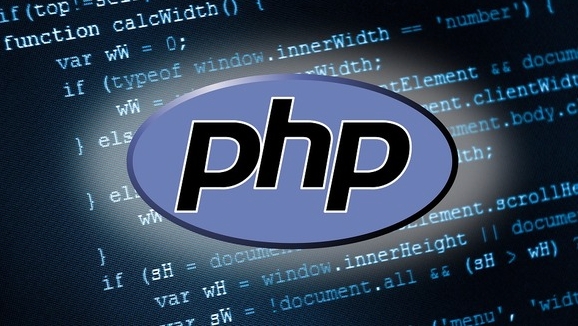There are two main ways to convert date strings to Unix timestamps in PHP. 1. Use the strtotime() function to be suitable for date strings in standard formats, such as "2024-12-25 14:30:00", but the processing of non-standard or Chinese format is weak; 2. Use the DateTime::createFromFormat() method to accurately match the specified format, which is suitable for processing non-standard format data, such as user input or CSV data; 3. For date strings containing Chinese characters, they can be converted into standard format first through str_replace() or regular expression before parsing. When selecting a method, you need to judge based on the specific scenario: use strtotime() in simple scenarios, and recommend DateTime::createFromFormat() in complex formats. Use the above method after the special format is combined with string processing.

It is actually quite common to convert dates to timestamps in PHP, especially when processing user input or historical data. If you get a string in date format, such as "2024-12-25 14:30:00", and want to convert it to a Unix timestamp (that is, the number of seconds from 00:00:00 UTC on January 1, 1970 to the present), PHP provides several more direct methods.

Using strtotime() is the easiest way
This function parses most common date formats and returns the corresponding timestamp. For example:

$dateString = "2024-12-25 14:30:00"; $timestamp = strtotime($dateString);
Its advantage is that it is simple to write and does not require the introduction of additional classes or methods. But there are also disadvantages, such as being sensitive to formats, and some formats may fail to parse. For example, the following situations are prone to problems:
-
"2024/12/25"has no problem on some systems, but may report an error in some Windows environments -
"25-12-2024"The daily-month-year format will also lead to error parsing
Therefore, it is recommended to pass in using standard formats (such as YYYY-MM-DD HH:MM:SS).

A more rigorous approach is to use DateTime::createFromFormat()
If you know the exact format of the date string, this method is recommended. It can specify the format explicitly to avoid parsing errors due to format confusion.
For example, suppose you have a string like "25.12.2024 14:30" , you can handle it like this:
$dateString = "25.12.2024 14:30";
$dateTime = DateTime::createFromFormat("dmY H:i", $dateString);
$timestamp = $dateTime->getTimestamp();This method is more suitable for processing non-standard format data, such as user form submission, CSV import and other scenarios.
A few points to note:
- If the format is written incorrectly,
createFromFormatmay return false - The converted object should be used to get the time stamp using
getTimestamp()method. - If time zone issues are involved, it is best to set the time zone explicitly, otherwise the default time zone is the server configured time zone by default.
Tips for handling Chinese or special formats
Sometimes you will encounter some strange date formats, such as "2:30 pm on December 25, 2024", strtotime() is not very effective at this time. You can first use str_replace() to replace Chinese characters with standard symbols:
$dateString = "December 25, 2024 at 2:30 pm"; $dateString = str_replace(array('year','month','day','afternoon','point'), array('-','','','','14',''), $dateString); // The result becomes "2024-12-25 14:30" $timestamp = strtotime($dateString);
Of course this is just an example. The specific replacement method depends on your original data format. If the format changes a lot, it is recommended to use regular expressions to handle it uniformly.
Basically these methods. Just choose a suitable one according to your needs: use strtotime() in simple scenarios, use DateTime::createFromFormat() in complex formats, and add a string to process in special cases.
The above is the detailed content of php date to timestamp. For more information, please follow other related articles on the PHP Chinese website!

Hot AI Tools

Undress AI Tool
Undress images for free

Undresser.AI Undress
AI-powered app for creating realistic nude photos

AI Clothes Remover
Online AI tool for removing clothes from photos.

Clothoff.io
AI clothes remover

Video Face Swap
Swap faces in any video effortlessly with our completely free AI face swap tool!

Hot Article

Hot Tools

Notepad++7.3.1
Easy-to-use and free code editor

SublimeText3 Chinese version
Chinese version, very easy to use

Zend Studio 13.0.1
Powerful PHP integrated development environment

Dreamweaver CS6
Visual web development tools

SublimeText3 Mac version
God-level code editing software (SublimeText3)

Hot Topics
 How do I implement authentication and authorization in PHP?
Jun 20, 2025 am 01:03 AM
How do I implement authentication and authorization in PHP?
Jun 20, 2025 am 01:03 AM
TosecurelyhandleauthenticationandauthorizationinPHP,followthesesteps:1.Alwayshashpasswordswithpassword_hash()andverifyusingpassword_verify(),usepreparedstatementstopreventSQLinjection,andstoreuserdatain$_SESSIONafterlogin.2.Implementrole-basedaccessc
 How can you handle file uploads securely in PHP?
Jun 19, 2025 am 01:05 AM
How can you handle file uploads securely in PHP?
Jun 19, 2025 am 01:05 AM
To safely handle file uploads in PHP, the core is to verify file types, rename files, and restrict permissions. 1. Use finfo_file() to check the real MIME type, and only specific types such as image/jpeg are allowed; 2. Use uniqid() to generate random file names and store them in non-Web root directory; 3. Limit file size through php.ini and HTML forms, and set directory permissions to 0755; 4. Use ClamAV to scan malware to enhance security. These steps effectively prevent security vulnerabilities and ensure that the file upload process is safe and reliable.
 What are the differences between == (loose comparison) and === (strict comparison) in PHP?
Jun 19, 2025 am 01:07 AM
What are the differences between == (loose comparison) and === (strict comparison) in PHP?
Jun 19, 2025 am 01:07 AM
In PHP, the main difference between == and == is the strictness of type checking. ==Type conversion will be performed before comparison, for example, 5=="5" returns true, and ===Request that the value and type are the same before true will be returned, for example, 5==="5" returns false. In usage scenarios, === is more secure and should be used first, and == is only used when type conversion is required.
 How do I perform arithmetic operations in PHP ( , -, *, /, %)?
Jun 19, 2025 pm 05:13 PM
How do I perform arithmetic operations in PHP ( , -, *, /, %)?
Jun 19, 2025 pm 05:13 PM
The methods of using basic mathematical operations in PHP are as follows: 1. Addition signs support integers and floating-point numbers, and can also be used for variables. String numbers will be automatically converted but not recommended to dependencies; 2. Subtraction signs use - signs, variables are the same, and type conversion is also applicable; 3. Multiplication signs use * signs, which are suitable for numbers and similar strings; 4. Division uses / signs, which need to avoid dividing by zero, and note that the result may be floating-point numbers; 5. Taking the modulus signs can be used to judge odd and even numbers, and when processing negative numbers, the remainder signs are consistent with the dividend. The key to using these operators correctly is to ensure that the data types are clear and the boundary situation is handled well.
 How can you interact with NoSQL databases (e.g., MongoDB, Redis) from PHP?
Jun 19, 2025 am 01:07 AM
How can you interact with NoSQL databases (e.g., MongoDB, Redis) from PHP?
Jun 19, 2025 am 01:07 AM
Yes, PHP can interact with NoSQL databases like MongoDB and Redis through specific extensions or libraries. First, use the MongoDBPHP driver (installed through PECL or Composer) to create client instances and operate databases and collections, supporting insertion, query, aggregation and other operations; second, use the Predis library or phpredis extension to connect to Redis, perform key-value settings and acquisitions, and recommend phpredis for high-performance scenarios, while Predis is convenient for rapid deployment; both are suitable for production environments and are well-documented.
 How do I stay up-to-date with the latest PHP developments and best practices?
Jun 23, 2025 am 12:56 AM
How do I stay up-to-date with the latest PHP developments and best practices?
Jun 23, 2025 am 12:56 AM
TostaycurrentwithPHPdevelopmentsandbestpractices,followkeynewssourceslikePHP.netandPHPWeekly,engagewithcommunitiesonforumsandconferences,keeptoolingupdatedandgraduallyadoptnewfeatures,andreadorcontributetoopensourceprojects.First,followreliablesource
 What is PHP, and why is it used for web development?
Jun 23, 2025 am 12:55 AM
What is PHP, and why is it used for web development?
Jun 23, 2025 am 12:55 AM
PHPbecamepopularforwebdevelopmentduetoitseaseoflearning,seamlessintegrationwithHTML,widespreadhostingsupport,andalargeecosystemincludingframeworkslikeLaravelandCMSplatformslikeWordPress.Itexcelsinhandlingformsubmissions,managingusersessions,interacti
 How to set PHP time zone?
Jun 25, 2025 am 01:00 AM
How to set PHP time zone?
Jun 25, 2025 am 01:00 AM
TosettherighttimezoneinPHP,usedate_default_timezone_set()functionatthestartofyourscriptwithavalididentifiersuchas'America/New_York'.1.Usedate_default_timezone_set()beforeanydate/timefunctions.2.Alternatively,configurethephp.inifilebysettingdate.timez






